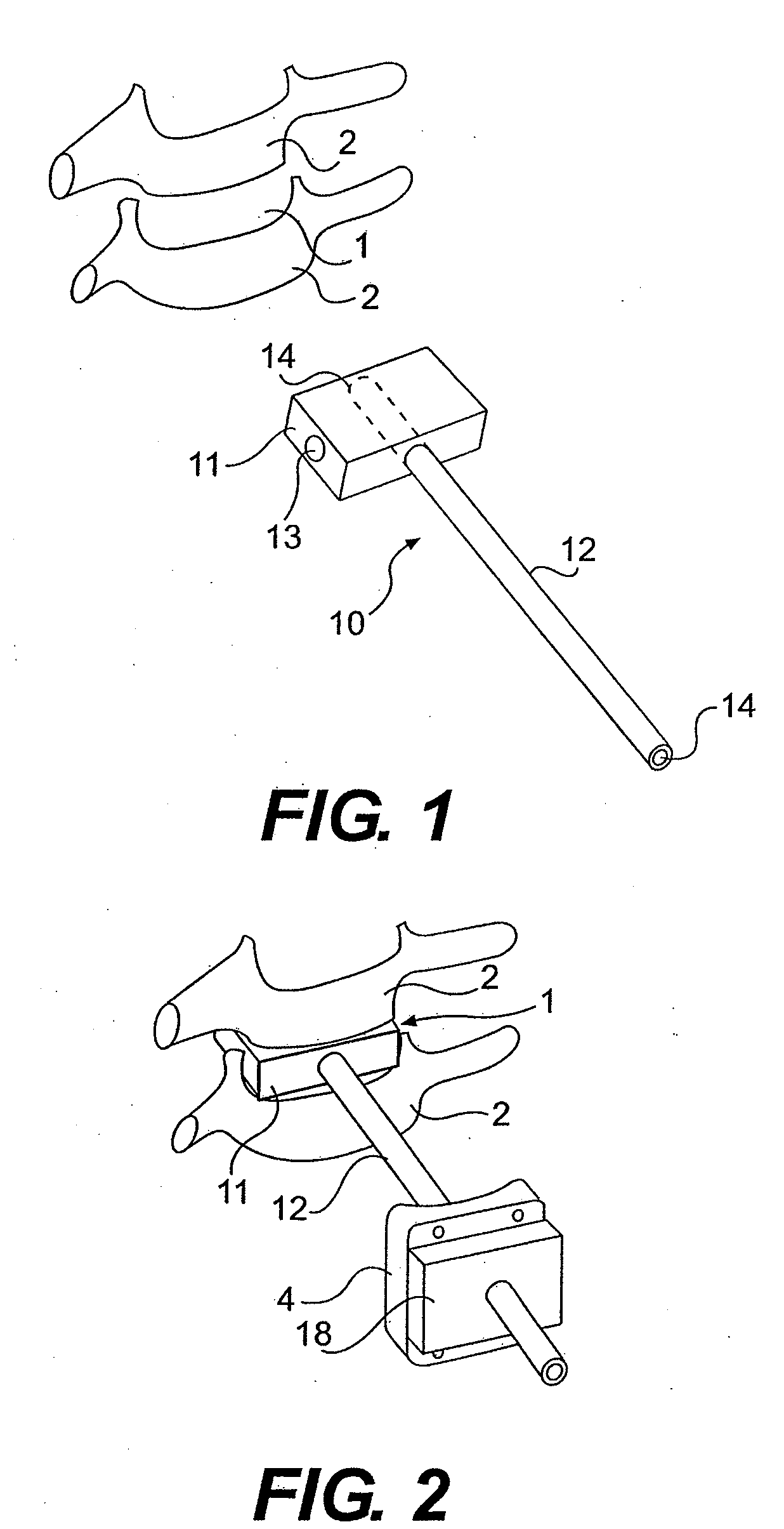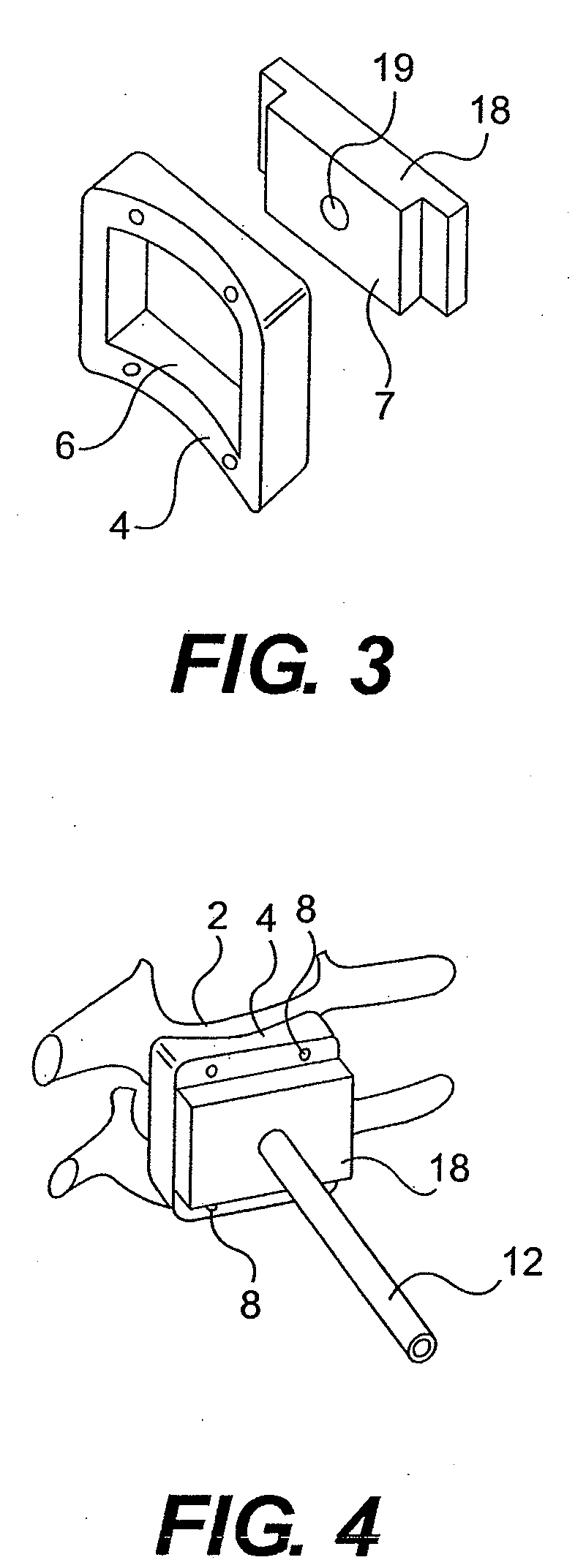Instrument set for fitting an intervertebral jont prosthesis
a technology for intervertebral joints and instruments, applied in the field of fitting an intervertebral joint prosthesis, can solve the problems of unsuitable arrangement, difficult to imagine the precise positioning of the protective sleeve, and the inability to precisely align and position the intervertebral prosthesis through such a protective sleeve, so as to achieve the best possible visual control and high degree of precision
- Summary
- Abstract
- Description
- Claims
- Application Information
AI Technical Summary
Benefits of technology
Problems solved by technology
Method used
Image
Examples
Embodiment Construction
[0046]According to FIGS. 1-5, an intervertebral joint prosthesis is to be inserted into the intervertebral space 1 of the vertebral bodies 2. To do so, those faces of the vertebral bodies 2 facing one another have to be worked. Sensitive areas lie close by. To minimize the risks associated with the preparatory work, a machining gauge 3 is to be used which can be secured on the vertebral bodies 2 at a predetermined position. This is done using the guide device 4. The latter is frame-shaped with an opening 6 which is designed to match a projection 7 on the gauge 3. It is to be secured on the vertebral bodies 2 by means of pins 8. This has to be done with a high level of precision. By virtue of its frame shape, it is very flat, with the result that it does not impede visual monitoring and can also be used in a confined operating site.
[0047]For positioning it, the adjustment instrument 10 is provided. It comprises an intervertebral plate 11 and an adjustment rod 12 connected rigidly to ...
PUM
 Login to View More
Login to View More Abstract
Description
Claims
Application Information
 Login to View More
Login to View More - R&D
- Intellectual Property
- Life Sciences
- Materials
- Tech Scout
- Unparalleled Data Quality
- Higher Quality Content
- 60% Fewer Hallucinations
Browse by: Latest US Patents, China's latest patents, Technical Efficacy Thesaurus, Application Domain, Technology Topic, Popular Technical Reports.
© 2025 PatSnap. All rights reserved.Legal|Privacy policy|Modern Slavery Act Transparency Statement|Sitemap|About US| Contact US: help@patsnap.com



